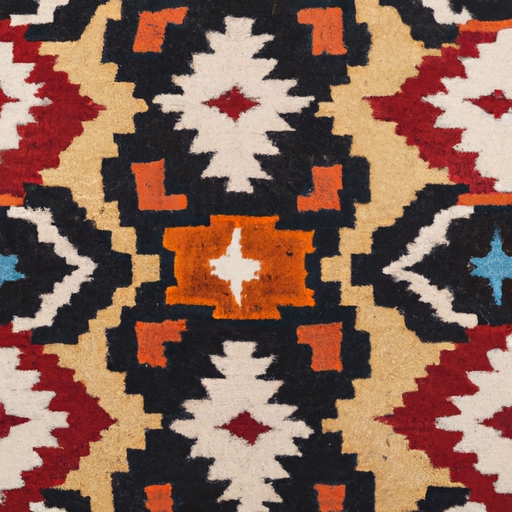Traditional Handcrafted Southwestern Floor Rug
Historical origins and cultural significance of the Southwestern motif
The history and origins of Southwestern floor rug making can be traced back to ancient times. The art of creating these beautiful handcrafted rugs has been passed down from generation to generation, with each weaver adding their own unique touch.
Southwestern floor rugs have become synonymous with the rich cultural heritage of the Native American tribes in the region. These tribes, such as the Navajo, Hopi, and Apache, have a long-standing tradition of weaving intricate patterns into their rugs using natural materials like wool and cotton.
The process of rug making begins with gathering and preparing the materials. The weavers carefully select the finest quality fibers before spinning them into yarns using traditional tools. Once the yarns are ready, they are dyed using vibrant natural dyes derived from plants and minerals found in the Southwest.
With the dyed yarns in hand, the weaver starts creating the rug on a loom. This requires great skill and patience as they meticulously interlace each strand to form a tightly woven fabric. The design is often inspired by nature or sacred symbols that hold special meaning within their respective cultures.
As time-consuming as it may be, this meticulous craftsmanship results in stunning Southwestern floor rugs that exhibit an exquisite blend of colors and patterns. Each rug tells a story, reflecting not only the weaver's creativity but also their connection to their ancestral roots.
Over time, Southwestern floor rugs gained popularity beyond tribal communities. They became sought-after collector's items and decorative pieces for homes worldwide. Today, contemporary artisans continue to honor this ancient tradition while incorporating modern designs and techniques.
In conclusion, Southwestern floor rug making is an art form rooted in history and culture. It represents a deep reverence for tradition while showcasing individual artistic expression. These handcrafted treasures serve as tangible reminders of our shared human heritage, bridging gaps between generations and cultures alike.
